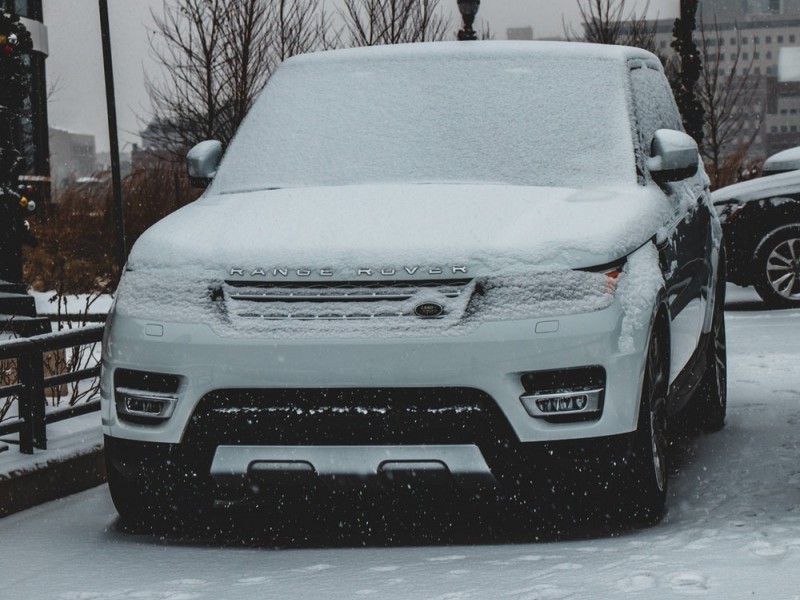As you step on the gas to pass the slower car ahead of you, you can feel the smooth power effortlessly pulling your Range Rover forward. Power that is generated by the V8 engine underneath the hood of your SUV. However, as you already know, the internal combustion engine works by the combined powers of thousands of controlled explosions per second in all the 8 cylinders.
These explosions or combustions generates a tremendous amount of heat which would destroy the engine in a matter of minutes. Therefore, there must be a reliable cooling system to draw all that heat away from the engine and protect it from severe damage.
Just like in every other vehicle, the cooling system of your Range Rover has got to be one of the most important systems of the vehicle. And therefore has to always be in tip-top shape. It consists mainly of a liquid (coolant) being circulated around the engine with a pump to absorb the heat. The coolant is then channeled to the radiator where it will be cooled by the stream of air coming from the front of the vehicle.
The cooling system must keep the engine at a constant temperature no matter what the outside temperature is. This regulation is achieved through the use of a thermostat which regulates the flow of the coolant. If the engine gets too hot for too long, the engine will be destroyed. On the other hand, if the engine temperature is too low, the fuel efficiency will decrease, and emissions will increase.
The coolant
The coolant that courses through the cooling system is part water and part antifreeze (ethylene glycol). This special mixture is designed to withstand sub-zero temperatures without freezing. It also must be able to handle high temperatures more than 250 degrees without boiling. But that’s not all, the coolant mixture must also inhibit rust and serve as a lubricant.
Fortunately, changing the coolant and flushing the cooling systems is only needed at long intervals. It’s recommended you change the coolant every two years or after every 30,000 miles. Some auto experts even recommend a coolant flush and replacement after 100,000 miles for later Range Rover models. You should also check the specific gravity of the coolant in your vehicle with a coolant tester to determine if it’s time for a flush and replacement. Always check your owners manual for the recommended coolant change interval.
Flushing the cooling system of your range rover before replacing the coolant helps to clear out any sediments or particles in the system that could affect the performance in the long run. A coolant flush and replacement is something you can undertake on your own. However, you must take special precaution because antifreeze is toxic.
Tools required for a coolant flush
You’ll need a drain pan, a fluid pump, hand gloves, and shop rags
Step-by-Step Procedure
- 1. Locate the reservoir and clean it: pop-open the hood and find the radiator. It’s a black box to the far right of the engine block. Without opening the cap, clean the reservoir thoroughly to ensure contaminants do not enter the cooling system when you remove the reservoir cap.
- 2. Empty the reservoir: allow the engine to cool down. Removing the coolant cap on a warm engine could cause it to fly off and spray hot pressurized coolant everywhere. Consequently, always wear safety goggles when working on your vehicle’s cooling system. Twist off the reservoir cap and pump out the coolant. This ensures that the coolant in the reservoir doesn’t find it’s way into the engine block and radiator. Use a large drain pan of at least 5-gallon capacity to collect the coolant.
- 3. Drain the radiator: locate the petcock underneath the radiator and twist counterclockwise to drain the radiator. Connect a hose to minimize spillage and ensure you catch all the fluid with the drain pan. Some models do not come with a petcock. In that case, you’ll just pull off the lower radiator hose to drain the radiator. Allow the radiator to drain for about 10 mins. Also, monitor the quantity of fluid that is drained. This will be roughly the amount of coolant mixture required to replace the drained coolant. Replace the hose or secure the drain petcock.
- 4. Fill the reservoir with distilled water: fill the now empty tank with distilled water all the way to the top. We recommend distilled water since tap water typically contains minerals which may react chemically with the metal inside your engine and radiator. Continue filling as the reservoir water levels drop as the distilled water makes its way into the engine and radiator. Stop filling when the reservoir water level doesn't t fall any longer. Close the reservoir.
- 5. Warm up your Range Rover: start the engine and let it reach the normal operating temperature. To speed up the process, rev the engine to about 2500 RPM and turn the defroster to the hottest setting. Run the engine for at least 10 minutes or till the fans kick in. Once the fans start to turn, run the engine for another 5 minutes to allow the water circulate properly through the cooling system. When the fan comes on, the thermostat triggers the water pump to start circulating the water through the system. The water doesn’t flow until the fan start to turn even if the engine has been running. Turn off the engine and allow it to cool before attempting to drain the water. The heated water will be under pressure and may forcibly erupt if the reservoir cap is opened immediately.
- 6. Drain the cooling system: remove the reservoir cap and pump out the water. Then open up the petcock to drain the water from the radiator and engine. Secure the petcock once the water is drained out.
- 7. Fill the reservoir with engine coolant: Check your vehicles owner’s manual to determine the right engine coolant. This is the right time to check for cracked coolant hoses and replace them if need be. Carefully squeeze the hoses leading from the engine coolant reservoir and check the point at which they connect to other parts of the engine. Look for cracks on the tubes and make sure the connection points are snug.
- 8. Mix the engine coolant and distilled water in a 50:50 ratio. If you live in a colder climate, you can increase the coolant/water ratio to 60:40. Use a coolant gauge to determine the temperature at which your mixture can protect against. Make sure your antifreeze to water ratio never exceeds 70 to 30 mixture. Freeze protection could drastically reduce when you have too much antifreeze in the mix. Some coolant comes premixed – that is, you don’t have to add any water. This is indicated on the coolant bottle.
- 9. Pour the coolant mixture into the reservoir to fill it up completely.
- 10. Remove air from the cooling system: burp the cooling system to remove all air. This is an important step to prevent damage to your water pump. Squeeze the upper radiator hose to help get air pockets out of the system. Also, you can burp the system by unmounting the reservoir and raising it a bit. Then, replace the reservoir cover. Start the engine and put on the heater. Allow it to run for 5 minutes and then top up the reservoir with the coolant mixture. You can repeat the process again to eliminate as much air as possible. Replace the reservoir cap.
- 11. Clean up: transfer the drained coolant in the drain pan to plastic bottles for proper disposal. And because coolant is toxic, pour cat litter on any spills to soak it up so you can sweep them up and dispose of correctly.
Check the coolant level a few days after the flush and top it up with more coolant mixture if the level is low. If you observe that the Range Rover is running cooler or hotter than usual after the flush, it’s probable that you may be low on coolant or the coolant water mixture is not correct. Test the coolant ratio and correct the imbalance by adding either coolant or water accordingly.
If you are still having issues, it could be signs of a much bigger problem, and you should get your mechanic to check it out immediately.






0 comments